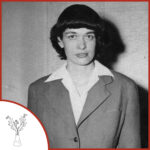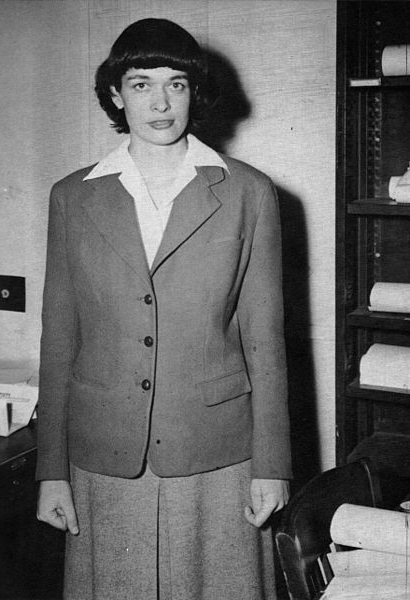

Birth: August 9, 1919
Death: November 10, 1986
Specialty: Physics
Major Contributions:
Helped build first nuclear reactor
Worked on first atomic bomb
Used isotopes to study climate changes through tree rings
Image Source: Wikimedia Commons
Born in 1919, Leona Marshall Libby was driven from an early age and graduated from high school at 14, and earned her bachelor’s from University of Chicago at 18. She faced some trouble finding an advisor for her graduate work, but began her research for her doctoral thesis with future Nobel laureate Robert Mulliken.
She first worked with physicist Enrico Fermi at age 23, when she was on the team that built Chicago Pile-1, the world’s first nuclear reactor. The youngest member of the team as well as the only woman, Libby earned her PhD shortly after beginning the job.
Libby followed Fermi when he began work on the Manhattan Project, where she worked on the construction of the reactor that produced plutonium for the atomic bomb. She made significant contributions to both projects, including helping to complete neutron cross section calculations used to determine that xenon-135 isotopes were causing the reactor to stall after coming online.
After the war, she became a fellow at the Institute for Nuclear Studies, working on the Chicago Pile-3 reactor. During the decades that followed, she worked at the Institute for Advanced Studies in Princeton, Brookhaven National Laboratory, New York University, University of Colorado, and RAND Corporation.
When teaching at UCLA in the 1970s her focus began to shift towards environmental studies and ecology. Libby found a way to use isotope ratios in tree rings in order to study the changes in temperature and rainfall patterns over centuries before recorded history, findings which helped usher in the study of climate change.Libby wrote hundreds of papers, continuing to contribute to scientific literature until 1984, two years before her death. Her book The Uranium People details early atomic research and offers an inside account of some of the most influential scientific advancements of the 20th century.
Written by Mary Ratliff
Sources:
American Physical Society: This Month in Physics History
See Also:
Voices of the Manhattan Project: Leona Marshall Libby’s Interview
